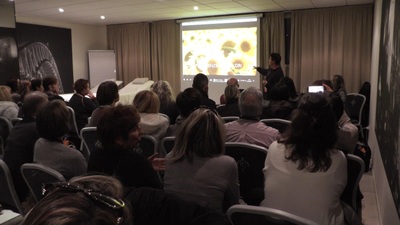Dr Carl Simonton
ALZHEIMER.
Nature Alamar Life videos are an effective non-pharmacological therapy. There are now numerous studies certifying important results with people living with dementia, relating to a better quality of life and recovery of residual abilities.
Watching familiar and regenerating natural scenarios in calibrated sequences stimulates memory, good mood, increases cognitive abilities, decreases the use of medication, improves attention and much more.
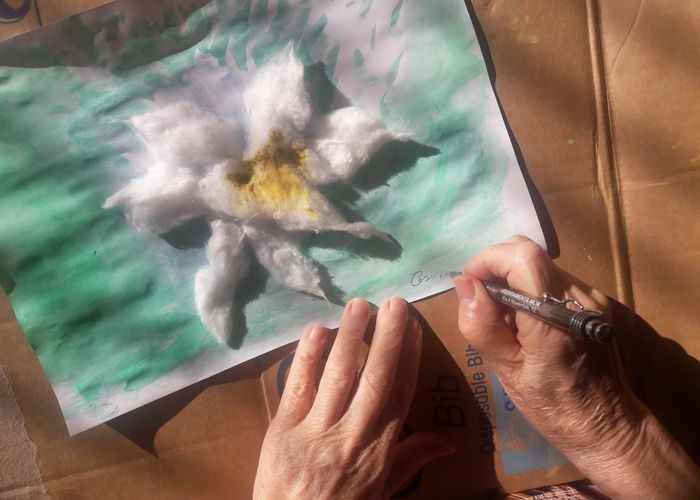
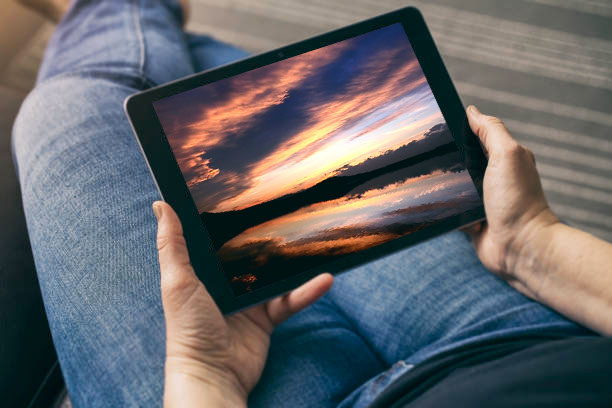
ADDICTION RECOVERY.
There are many possible interventions in addiction recovery that can be implemented according to the specific needs and personalities of the patients. The results of experiments using Nature Alamar videos are very encouraging and confirm the validity of the method, also as a tool for recovery and control of one’s emotions.
REHABILITATION.
During physical and psychomotor rehabilitation practices, it is useful to reproduce the sense of immersion in Nature, because it favours the recovery process and makes the practice time more pleasant and effective.
Psycho-neurological rehabilitation also improves with the viewing of images of natural environments, allowing a more attentive concentration, with a better recovery of cognitive abilities.
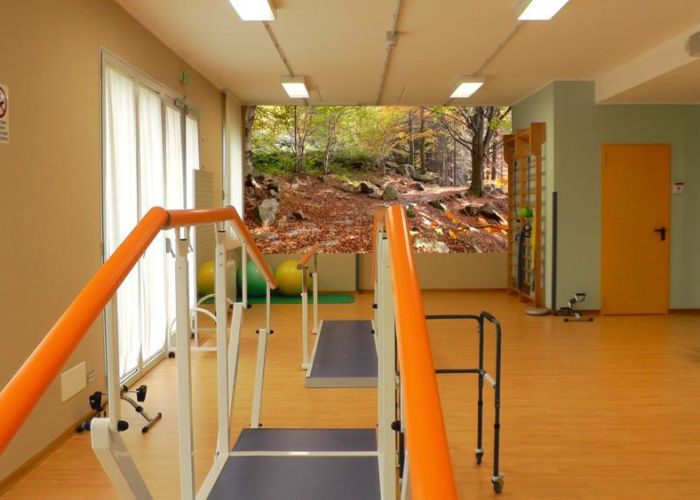
REDISCOVERING THE PLEASURE OF LIVING EVEN IN ILLNESS.
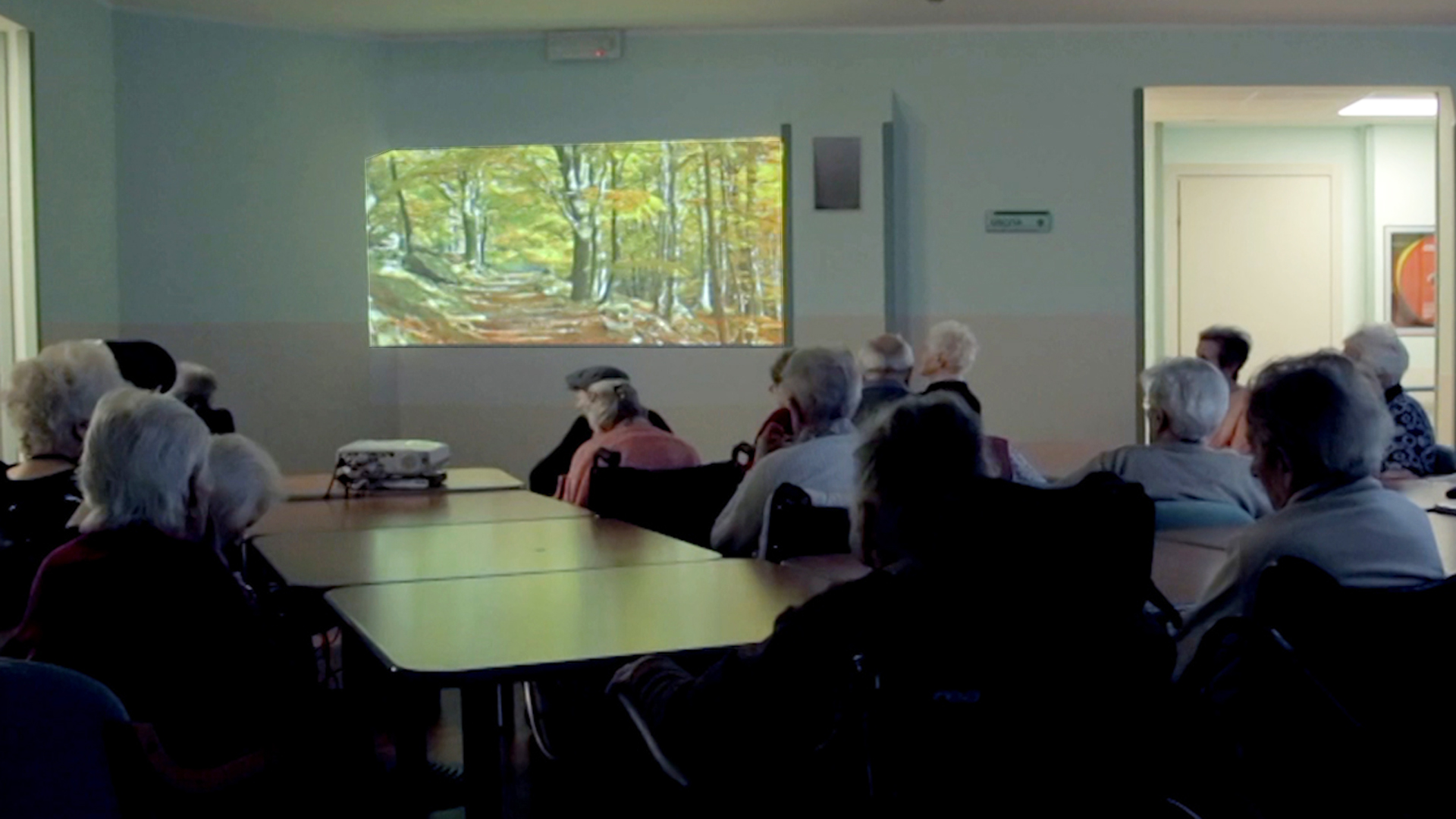
“Regaining the memory of pleasant moments in one’s life can restore fragments of one’s identity to the person with Alzheimer’s, the one that is scattered throughout his or her life history. Reminiscence gives serenity and well-being and is therefore also an emotional and affective function, as well as a cognitive one: through the recovery of the memory, the person once again perceives the sense of having their own continuity in time, and comes out reassured. The lowering of anxiety, in turn, frees and improves all other cognitive functions”.
Dr Cristina Innocenti, Psychologist and psychotherapist, Transactional Analyst TSTA-p, Senior MBSR Therapist and Teacher, Lecturer and supervisor in the Performat School, Pisa. “Images beyond Memory” conference.
“Experience Nature videos constitute a care modality capable of reducing physical and pharmacological restraint for people with dementia, while also enabling the creation of that ‘feeling’ based relationship that is effective and fundamental when approaching a person suffering from Alzheimer’s.”
Dr Letizia Espanoli, Expert trainer and organiser of Alzheimer’s units – Sente-Mente Project creator. “II Sente-Mente Day” Conference.
TESTIMONIALS IN THE CONTEXT OF ALZHEIMER’S

Within three minutes, no more, A. slowly stops crying, his face relaxes, his mood changes completely from anguished to carefree. The videos really seem to be a great way for these people to bring back their fondest memories.
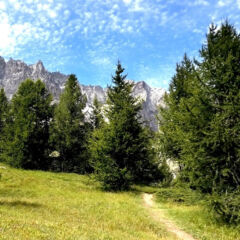
We can’t bring them to the mountains, but we can bring the mountains to the care facility and make them feel at home again. This is the great power we have; we give them back their lives. … It is really a therapeutic tool; it is pure therapy for the soul and the heart.

While watching therapeutic TV, the lady relaxes and manages to sleep. Even now, during the nights when she starts to manifest psychomotor agitation, the operators bring her in front of the therapeutic TV and most of the time this proves to be decisive.
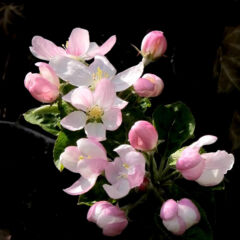
Emotions and sensations of enchantment and beauty. The environment becomes serene and welcoming. The first result was a reduction in so-called ‘behaviour disorders’. On a physical level, too, some of them felt improvements.
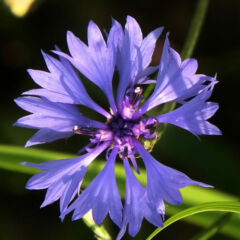
The first element you must always reflect on is the environment in the sense of stimuli, colours, possibilities. I believe that our televisions must remain switched off and there must be a wisdom that proposes thoughtful images on the biography of these people. This video, which also brings us back to peace, has to be turned on. Two, three armchairs, the video goes and you have created an environmental pause so that the person can sit, rest for three or four minutes and restart. Today we can choose things that have a very low economic impact and a very high impact on the quality of life. Doing this is an improvement.
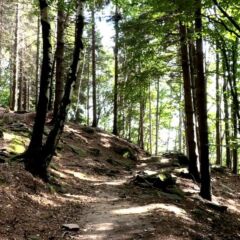
In the serenity, in front of a forest, a flower, or other images, memories also began to surface. Or people began to sing, or remembered a nursery rhyme. The climate influenced the family members themselves. For example, a group of relatives had formed, who would have the residents sing in the evening after dinner, in front of the pictures. The tranquillity that allowed for conversation had been created.
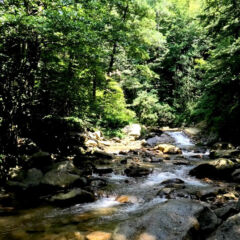
Emilia sees the films with an impressive hunger for beauty, she is completely dazzled, there is nothing around her during the forty-minute session.

Romeo had not spoken for two years; he no longer expressed any emotion. One day I projected the video of the sea and out of the blue we heard “Ah, the sea!”. He started telling us that he had asked his wife, kneeling on the beach, to get married. They then got married and went back there on their honeymoon. And he told us about his honeymoon.

We had two residents who no longer wanted to eat, they said ‘I don’t want to live anymore, so I won’t eat’. We put the fruit DVD rather than the garden DVD and eventually they started eating on their own, autonomously.
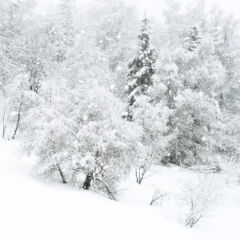
There are often moments of sharing on reminiscences, tales of their experiences or memories, and with emotion and sighs many manage to let us understand the inner depth that these videos allow them to reach.
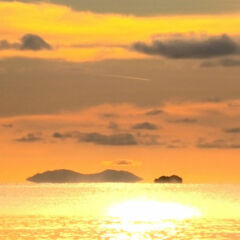
The methodology of storytelling combined with the stimulation of nature videos arouses, activates, conveys emotions. The conversational dimension is intensified in the group. The memory dimension is activated from the natural place, but only transits from there to the connected and personal sensations and EMOTIONS.
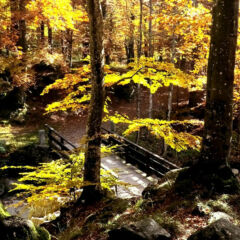
Rereading the stories that have been made makes us realise the richness of this proposal, which does not end in the time of the actual narration, but continues on the written page. We are collecting them with the idea of enhancing and highlighting, preserving them with care.
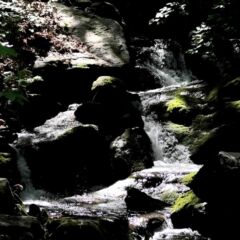
They have become so in tune with the experience that it now becomes almost spontaneous for them to listen and get into synergy with the activity in order to respond actively and enthusiastically.

The interesting observation – and one that I think would be worth investigating with a more detailed study – is that the videos introduced an important cognitive and attentional stimulus after a moment of relaxation, while maintaining calm and tranquillity within the session.

Also the caregivers have been facilitated in their work. The projections of the Relaxation Channel manage to give a rhythm to the work of caring, which is slow and delicate. This slowing down can be perceived in so many actions of daily life: one sees more, hears more, feels more… this is perhaps the biggest change that the programme has brought about.
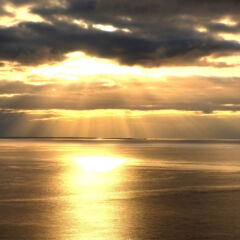
Last but not least, the sense of beauty that these nature paintings have been able to create in the facility. The paintings that are projected are truly beautiful, are never the same, and also aesthetically create a pleasant environment to be in.
Methods of use
ONE BY ONE:
To prevent distress or intervene in cases of difficulty, disorientation, apathy or aggression, with customised playlists. Administered daily, the videos relax and soothe, stimulate cognitive skills, activate memories and emotions, and evoke familiar environments and sounds.
GROUP:
The scenarios encourage conversation and sociability, instil well-being and good mood. Watching in the lounge is an attractive focus, a restful and regenerating oasis where people can go spontaneously. In workshops – be they sensory, artistic, narrative, cognitive, motor – films are valuable allies.
PASSIVE USES
H24 in the lounge: an area dedicated to relaxation, regeneration, and socialisation, where people spontaneously stay, rest, and get back to building relationships without the intervention of operators, in an atmosphere of shared well-being.
Before and after activities, or after lunch: videos make people more approachable, encourage concentration and participation. Watching, before art workshops, stimulates passion and attention; after activating practices it facilitates rest and interiorisation; during activities it is creative, inspirational, reminiscent.
In care: moments of waking up, lunch, or bathing become experiences of peace, relaxation, reminiscence.
ACTIVE USES
Art workshops: Natural sceneries contextualise the experience of painting, or creating with natural elements (sand, pebbles, petals, leaves, wood…). The vision increases concentration and psychomotor skills, gives well-being and self-esteem.
Creative workshops: cognitive stimulation, evocative and creative storytelling: starting from the observation of films, invent a story all together. Stimulates sociability, imagination, fantasy, encourages the recovery of memories and one’s own identity through play and complicity.
Multisensoriality: in combination with essential oils, herbal teas, aromas, tactile experiences.
Music therapy, singing.
Motor therapies: to set practices in Nature. Use of images as motor stimulation
Locations:
Lounge, multi-sensory room, activity room.
Canteen room, assisted bathroom, long-stay rooms.
Reception, meeting room.
BENEFITS:
- Serenity, good mood, relaxation, muscle relaxation.
- Reduction in behavioural disturbances (disorientation, repetition of sentences etc.).
- Reduction of irritability and aggressiveness, improved integration with others.
- Increased responsiveness and vitality, greater availability (e.g., for activities).
- Increased attention span and ability to concentrate.
- Increased visual and conversational interaction.
- Increased relevance of comments and answers, retrieval of unusual words.
- Increased psychomotor skills.
- Reminiscence.
A NATURAL, INDIVIDUAL, MODULAR APPROACH

Each case of autism has its own characteristics, which is why the use of Alamar videos offers a measured approach capable of gently intervening with children and adults. In this way, one can benefit from the support of natural stimuli without activating too many sensory channels, such as touch and smell, or bringing into play all those ‘perceptual sense apparatuses’ that organise (and in autism disorganise), offering relaxing and pleasant experiences, without inducing tension or fear.
The greatest opportunities offered by the method are:
- Modulating sound stimuli: the auditory apparatus of these children is particularly sensitive, all acoustic loudspeakers can be adapted according to the needs of the individual, e.g., by adjusting the volume to a minimum, customising the bass and treble.
- Modulating visual stimuli: some may need to go almost to black and white, or remove the red, videos allow the intensity of the original colour to be gradually exposed, benefiting from everything else.
- Rapid access to Nature.
- Rapid interruption. Problem behaviours arise even in optimal and cosy contexts. A sudden unpleasant memory, the triggering of a hypersensory can pervade the person with autism and turn what was until a short time before a jubilant joy into annoyance-discomfort, a ‘nightmare’. For the caregiver (parent, teacher, caregiver), interrupting the short-circuit while being dozens of kilometres from home is really difficult.
- Anticipating contexts to be seen. Videos make it possible to introduce new scenarios and build confidence. They help to contain the problem behaviours that arise in dealing with new information, however wonderful.
- Integrate with the current educational plan. At school, a certain topic, studied in a book, can be ‘sterile’; sharing environments and natural elements with classmates can be a trump card for learning content such as seasons, environments, colours, plants.
- Discover – understand – manage which sensory channel or effect is most sought after or rejected.
- Increase opportunities for relationship or independence.
Information taken from material kindly supplied by Ins. Elisabetta Scuotto, Coordinator in charge of the Information Desk and Specialised Library of the Autism Service Centre, Piacenza
HELPING THE PSYCHE WITH IMAGINATION
The vision of the Alamar sequences can be defined as a non-pharmacological therapy, which enables the achievement of positive results on a psychological, physical and social level. Indeed, it enables benefits in terms of individual well-being, with an improvement in collective cohesion and quality of life at the same time. Research also shows that watching Experience Nature videos transforms negative emotions into positive ones and brings significant relaxation even after just 6 minutes.
This practice is very effective in stimulating sensory perception, the ability to regulate one’s emotions and to solve everyday problems.
It is a rehabilitation project centred on the personal story, on potentially enabling basic responses, with the aim of fostering all forms of healing, well-being and social inclusion.
The Imagined Tale.
One of the tools suggested to use the Experience Nature videos is “The Imagined Tale”, a narrative set in Nature, a game of projections that plumbs the most articulated aspects of the personality, through the suggestions and responses that each person provides. It is based on the creation, individually or in a group, of a story, an adventure, a fable, an outing, a journey in which the internal dynamics of the person are projected onto the chosen natural scenarios and onto the characters introduced in the tale.
It is also a psychological test, useful for understanding how the subject moves in his or her inner world and in external reality. In several respects it is similar to the Thematic Apperception Test, from which it differs in the vitality of the scenes, the need to link them one to the other to create a story, and the fact that the images can be chosen directly by the participants. Furthermore, the viewing of the Alamar videos brings the benefits of Nature throughout the session: it relaxes and improves the mood, of the individual and the group.
BENEFITS:
- They calm aggression, depression, anxiety, apathy, stress.
- They allow deep relaxation – over 42% in less than 10 minutes.
- They transform negative moods into positive ones.
- They become an effective tool for processing emotions.
- They stimulate attention, concentration, intuition, imagination, creativity.
- They foster collaboration, integration, human relations.
- They give well-being, positivity, harmony; a significant increase in quality of life.
- They act as cohesion for the group.
MENTAL SERENITY BECOMES SUPPORT IN TREATMENT.
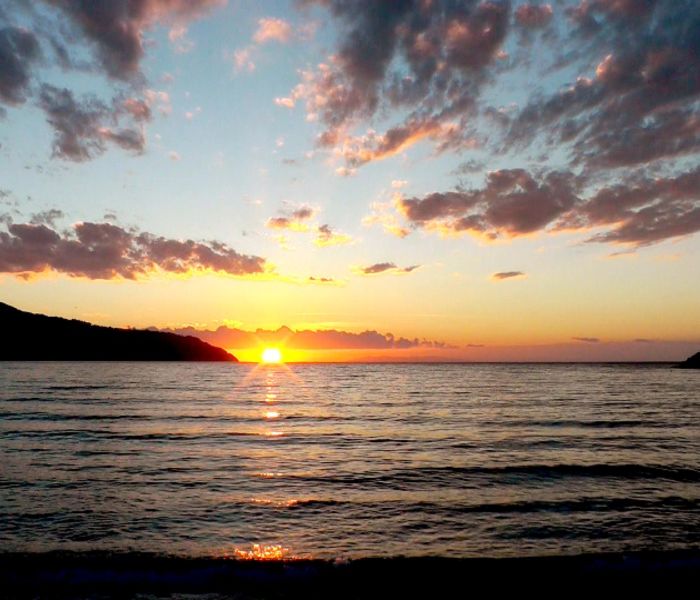
In healthcare, Alamar Life’s videos make it possible to bring the benefits of Nature to environments where stress and suffering are predominant.
The therapeutic process (whatever it may be) is enhanced thanks to the beauty and vitality of the images, which are able to soothe, transmit energy, support inner strength and ultimately improve the quality of life of people who are facing an illness.
The beneficial power of green seems to be generated both by a concrete sensorial ‘perceptive’ mechanism, which involves the observer on a physical level, and by a strong ‘evocative’ potential responsible for symbolic and emotional activation in our minds, the effect of which is the modification of our psycho-physical state.
This aspect is certainly not secondary, since many studies have shown how the simple fact of looking at images of Nature – such as photos, paintings or films – can improve the quality of our lives in just a few minutes, reducing stress.
“There is scientific evidence of the positive influence of nature not only on the psychological well-being of patients, but also on the success of the therapeutic process”.
Dr Vibe-Petersen, head of internal medicine at the Center for Cancer and Health in Copenhagen.
Researchers at Johns Hopkins University in Baltimore have shown that viewing natural images significantly reduces the perception of pain. The experiment was conducted on patients undergoing bone marrow harvesting and biopsy. Pain intensity was measured with a scale from 1 to 10 (from 4 upwards pain is considered moderate or severe). They divided the patients into three groups: to the first group they showed no pictures, to the second group they showed city scenes and to the third group they showed nature scenes (blow-ups with sounds in headphones).
Results:
- Patients who did not see any scenes: perceived pain 5.7
- Patients who observed city images: perceived pain 5.7
- Patients who observed images of nature: perceived pain 3.9
The researchers concluded that: “The reduction in pain did not occur just because the patients were distracted, but because the elements of Nature had a relaxing effect on them”.The Nature videos serve to counteract the rumination of negative thoughts and regain strength and energy throughout the healing process.
Uses:
- As a daily anti-stress and energy regeneration practice.
- During radio and chemotherapy.
- In waiting rooms for diagnosis, treatment and operations.
- In post-surgery hospital stays.
MANAGING EMOTIONS AS A NATURAL AID.
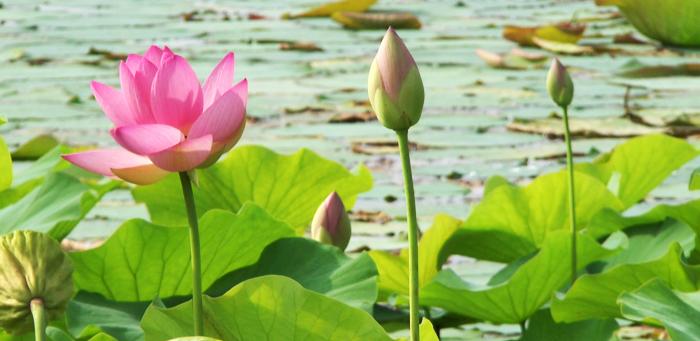
The capacity for emotional regulation in addicts is one of the cornerstones of treatment. Individuals with problems in this area often have disorders that can be worked on naturally by exposure to Alamar’s videos.
Once the capacity for relaxation, wellbeing and regeneration derived from viewing the natural sceneries has been rediscovered, a new ability to control impulsive behaviour has been found as a consequence.
AN EXPERIMENT IN THREE RECOVERY COMMUNITIES OF THE COOPERATIVA IL PUNTO (BI) ITALY.
Three groups of patients in three therapeutic recovery communities of high, medium and low severity were identified and compared – by drawing lots – with control groups in the same facilities. A total of 29 subjects: 16 experimental and 13 control. The experimental subjects were offered the viewing of a long sequence, lasting 12 minutes, twice a week. Ten different themes were used for the experimentation, totalling 2 hours over a period of one month.
Performance was measured using the DERS (Difficulties in Emotion Regulation Scale), a self-report questionnaire that reports on clinically relevant difficulties in the regulation of emotions of a negative nature. The test allows measurements regarding the presence of potential difficulties in the emotional dimension.
In summary, the DERS allows measurements regarding the presence of potential difficulties in the following dimensions:
- awareness and understanding of emotions,
- acceptance of emotions,
- ability to control impulsive behaviour and to behave in accordance with one’s goals,
- ability to use flexible emotional regulation strategies appropriate to the context and situational demands.
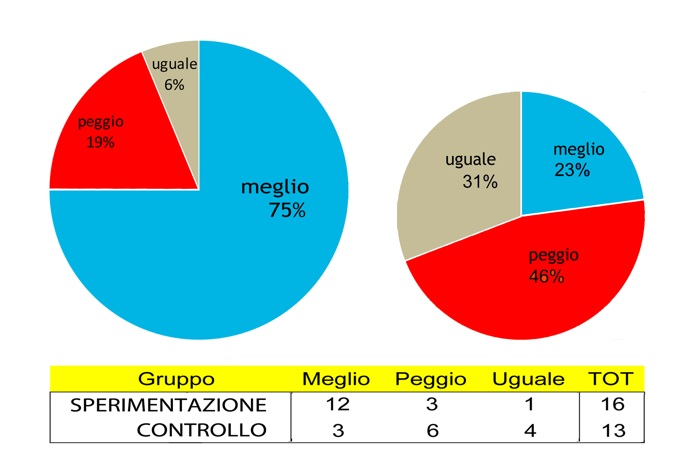
The results of the DERS showed an increase in the ability to control emotions in 75% of the experimental subjects, compared to a 23% improvement reported by subjects in the control group.
A questionnaire was also specially designed and made to be completed before and after each viewing, using two separate forms so as not to influence the evaluation. The shift from moods such as “tired” and “sad” to “relaxed” and “amazed” was significant.
Experimentation carried out at the Il Punto Cooperative (Biella) addiction recovery facilities by Dr. Daniele Carraro, Dr. Lidia Barazzetto, Manuela De Maria, Eleonora Boi.

+ 25 RELAXED; + 15 AMAZED
Download the E.N.T.I. EXPERIENCE NATURE TECHNOLOGY INDOORS brochure.
National Congress on Drug Addiction – 13 November 2015
The results of the first experimentation, in the treatment of people with addiction problems, which uses the benefits of Nature and environmental psychology as a recovery tool, were presented at the SITD (Società Italiana TossicoDipendenze) National Congress. The results obtained are very encouraging and confirm the value of the Experience Nature method even with people suffering from addiction.
THE PLEASURE OF A WALK IN NATURE, EVEN INDOORS.

Science asserts that if we pause to look at a natural landscape, distant areas of the brain connect and work in synchrony. Environments with a high presence of natural elements have a greater capacity to reduce stress and offer more opportunities to regenerate cognitive resources and psychophysical capacities than artificial environments.
During physical and psychomotor rehabilitation practices, having the sense of immersion in Nature favours the recovery process and makes the practice more pleasant and effective. In this way, time spent working is transformed from duty into pleasure. Watching Experience Nature videos also helps the psychoneurological rehabilitation process.
“I cannot say exactly how nature exerts its calming and organizing effects on our brains, but I have seen in my patients the restorative and healing powers of nature and gardens, even for those who are deeply disabled neurologically. In many cases, gardens and nature are more powerful than any medication”.
Oliver Sacks, neurologist and author
BENEFITS:
- They instil positivity and zest for life.
- They improve the effectiveness of rehabilitation.
- They alleviate feelings of pain and discomfort.
- They help to keep one’s gaze ahead.
- They make activity more enjoyable.
DEGREE THESES – PHILOCOLOGY COLUMN, UNIVERSITY OF PADUA: VISION OF NATURE EXPERIENCE 6 MINUTES
“Effects on perceived regeneration and affective states of images of natural landscapes in different seasons”. Thesis by Ottavia Damian, Supervisor Prof. Francesca Pazzaglia.
Read the article
NATUROPATHY: VISION EXPERIENCE NATURE 21 MINUTES
Measurement carried out with BioWell: the beneficial effects perceived on a psycho-physical-emotional level following the viewing of the Alamar Life nature films.
Read the article
NATUROPATHY: EXPERIENCE NATURE VISION 12 COLOURS IN 10 MINUTES
Measurement with BioWell: reduction of tension and consequent increase in relaxation of 42%.
Read the article
ALZHEIMER’S: ‘EXPERIENCE NATURE’ PROJECT
Cognitive/sensory stimulation with people living with dementia, Alzheimer Care Unit LTC Fontenuovo Fondazione Onlus, Perugia (PG) Italy.
Read the article
ALZHEIMER’S: NON-PHARMACOLOGICAL THERAPY PROJECT
Art-therapy workshop with people living with dementia – Residenze Anni Azzurri LTC Beato Angelico, Borgo San Lorenzo (FI) Italy.
Read the article
ALZHEIMER’S: NATURE VS NATURE
Experience Nature videos pitted against the most beautiful nature videos on the web (BBC music and landscapes), LTC C. Vannetti, Rovereto (TN) Italy.
Read the article
ALZHEIMER’S: ART THERAPY
Painting workshop with people living with dementia, Maria Grazia care home, Lessona (BI) Italy.
Read the article
ADDICTION RECOVERY: VISION SESSIONS
The results of the EXPERIENCE NATURE experimentation carried out at three Biella-based “Il Punto Onlus” recovery communities presented at the Italian Society of Addiction national conference
Read the article
ALZHEIMER
““I find it beautiful that when I look away and then watch television, there is another image, new and beautiful, a flower whose scent I seem to smell. And I am always amazed by this: it is always a surprise! Thank you so much for that.” Mrs. A., resident at LTC Giovanelli, Tesero (TN) Italy. Read the article
“Emilia sees the films with an impressive hunger for beauty, she is completely dazzled, there is nothing around her during the forty-minute session. It is a very valuable tool for my grandparents, offering workshops, storytelling moments, to celebrate the changes of seasons, but also as a real non-pharmacological therapy”. Valentina Pirola, occupational therapist Santa Teresa care home, Livraga (LO) Italy. Read the article
“We had two residents who no longer wanted to eat, they would say ‘I don’t want to live anymore, so I won’t eat’. We played the fruit DVD rather than the garden DVD and eventually they started to eat on their own, autonomously. … Romeo had not spoken for two years; he no longer expressed any emotion. We accompanied him to the sessions anyway because he liked to watch the videos. One day I projected the sea video and all of a sudden, we could hear him saying “Ah, the sea!”. Samanta Noldin, dementia social educator LTC Santa Maria, Cles (TN) Italy.
“‘But I never thought I would do that trip again, never imagined it‘. She relived the honeymoon she had taken with her husband and that is why she was so moved, because for her that moment was beautiful. … These testimonies make you understand what they experience when we use an instrument that creates therapeutic beauty. ” Cristina Falomi, dementia social educator Giglio Blu care home, Perugia (BG) Italy.
“Reliving emotions. Whatever they are, they make our residents feel alive. All we can do is stand beside them and listen to the symphony of their hearts and lives. … We cannot bring them to the mountain, but we can bring the mountain to the care facility and make them feel at home again. This is the great power we have; we give them their life back. … It is really a therapeutic means; it is pure therapy for the soul and the heart. Since we can experience it, it can give us so many unique experiences with the people we care for’. Anna Daccordo, psychotherapist LTC Santa Maria, Cles (TN) Italy.
“With the experience of nature videos, we have enjoyed not only memories, but also emotions. Emotions remain until our last breath. … Experiencing these moments with them also arouses emotions in us as operators, which we can take home as emotional baggage that we can retrieve in difficult moments of our work”. Angela Eccher, Dedico Project Manager, LTC C. Vannetti, Rovereto (TN) Italy.
“Within three minutes no more, A. slowly stops crying, his face relaxes, his mood completely changes from distressed to carefree. The videos really seem to be a great way for these people to bring back their fondest memories”. Maria Rita Di Gioia, psychotherapist LTC C. Vannetti, Rovereto (TN) Italy.. Read the article
“Often moments of sharing on reminiscences, tales of their experiences or memories open up, many even with emotion and sighs manage to make us understand the inner depth that these videos allow us to reach; from there I very often engage with cognitive stimulation and historical-geographical retrieval. They have become so in tune with the experience that it now becomes almost spontaneous for them to actively and enthusiastically respond in listening and synergy with the activity.“. Enrica Pontin, dementia social educator LTC Villa Serena, Solagna (VI) Italy. Read the article
“The methodology of storytelling combined with the stimulation of nature videos arouses, activates, transmits emotions. The conversational dimension is intensified in the group. The remembrance dimension is activated from the natural place but only transits from there to the connected and personal sensations and EMOTIONS”. Iris Dall’Aglio, dementia social educator, Certified Timeslips facilitator (Timeslips storytelling for dementia Project). Read the article
“The recordings of basal blood pressure values made after the viewing and storytelling activity revealed an objective drop of 20mmHg, both in the cases treated with antihypertensives and in the cases not treated pharmacologically”. Cristina Falomi, dementia social educator Giglio Blu care home, Perugia (PG) Italy. Read the article
“Right from the start, we noticed how much our elderly enjoyed these living images. Everyone was generous in sharing memories and emotions, making personal contributions in the creation of the final narrative. The administration of the NPT-ES allowed us to see the positive effect of this intervention on the participants’ well-being also from a more objective point of view. … Re-reading the stories realised makes us realise the richness of this proposal, which does not end in the time of the actual narration, but continues on the written page. We are collecting them with the idea of valorising and highlighting, preserving them with care”. Paola Buelli, dementia social educator LTC Casa Serena, Brembate Sopra (BG) Italy. Read the article
“There are beautiful moments about remembering, about their being, and that’s why we had a session on the sea, bringing the basin with the sand, water, shells… It was very, very emotional because one of our residents, who speaks very little and has really big difficulties, told us how he met his wife, right at the sea, he even started crying and when we told his daughter about it, she too got very emotional because it was a memory she had as a child, but she had forgotten it and now she has it alive again”. Samanta Noldin, dementia social educator LTC Santa Maria, Cles (TN) Italy. Read the article
“The interesting observation – and one that in my opinion would be worth investigating with a more detailed study – is that the videos introduced an important cognitive and attentional stimulus after a moment of relaxation, while maintaining calm and tranquillity within the session”. Nicoletta Bocca, physiomotricist LTC Opera Pia Cerino Zegna, Biella (BI) Italy.. Read the article
“Many goals were achieved: one lady went from a condition of social isolation and apathy to rediscovering her autonomy, creating a weekly routine linked to the activity, increasing her self-esteem and improving manual dexterity over the months. … “. Valentina Pirola, occupational therapist Santa Teresa care home, Livraga (LO) Italy. Read the article
“The use of Alamar at our Residence has significantly helped Guest and Caregiver experience hygienic care as a time of well-being and relaxation. … Bath time thus became an occasion to remember, increasing trust and compliance with the Caregiver. We also noticed, a significant reduction in behavioral disturbances and increased adherence and cooperation.” Ilaria Sardo, psychologist Paradiso care home, Gattinara (VC) Italy. Read the article
AUTISM
“The potential of a course with EXPERIENCE NATURE videos with children and adults with Autism problems offers a lot of potential. It is a tool to benefit from Natural Inputs, without activating sensory channels such as touch and smell”. Elisabetta Scuotto, Head of the Information Point and Specialised Library of the Autism Service Centre, Piacenza (PC) Italy. Read the article
CHILDREN
“Afterwards, when I proposed a free painting activity, in my observation I noticed not only a great commitment to the work they were doing, but above all a condition of extreme relaxation that led the children, who worked alternately in small groups, to remain in an almost meditative silence”. Alessandra Nardelli, kindergarten teacher. Read the article
“The slow and relaxing images allowed even the two most motorically unstable children to find calm and concentration. The experience favoured socialisation, the sharing of opinions and ideas, the ability to adapt and consider the possibility of changing ideas by welcoming the other”. Raffaella Castrale, kindergarten teacher. Read the article
ADDICTIONS
“The results showed an increase in the ability to control emotions in 75% of the experimental subjects, compared to a 23% improvement reported by subjects in the control group. The shift from moods such as tired and sad to relaxed and amazed was also significant’. Daniele Carraro, psychologist, Head of the addiction recovery facilities of the Cooperativa Il Punto, Biella (BI) Italy. Read the article
PSYCHIC DISCOMFORT
“The nature videos were an inspiration to dance (dance-movement therapy). They coalesced the group into a shared, palpable, visible idea of performance. The intrinsic beauty of the images reverberated throughout”. Iris Dall’Aglio, dance-movement therapist. Leggi l’articolo
DENTAL CARE
“The Dental Wellness Clinic in Turin has chosen Experience Nature videos and photographs to make treatment time in the clinic’s many offices more comfortable, relaxing and soothing. Clients are more serene, relaxed, happy; the doctors’ burn-out has also improved”. Laura Guasco, Clinic Director.
CRANIOSACRAL THERAPY
“What evidently happened is that Cristina Fino, in the ‘contemplative mediation’ produced by the observation of the film and its processing in the editing, has spontaneously come into the perception of her fluid body, in contact with the inner tides. … Cristina’s experience tells us that even the eyes, under certain conditions, can ‘take us in’ . Paolo Maderu Pincione, founder of the Institute for CranioSacral Therapies, Italy. Read the article
2019 RI.GENE.RA National event on the influence of frequencies on stem cells
Full talk by Cristina Fino.
2019 RI.GENE.RA National event on the influence of frequencies on stem cells
Extracts from Cristina Fino’s intervention.
2019 RI.GENE.RA National event on the influence of frequencies on stem cells
Maurizio Forza introduces Cristina Fino – excerpts.
2019 Meeting of Care Professions
Cristina Fino presents the Relax Experience Nature Care channel, the 1st therapeutic TV.
2019 Meeting of Care Professions
Anna Daccordo, psychologist: Experience Nature videos as a therapeutic tool.
ALZHEIMER
2018 “Waiting for Alzheimer Fest”
Cristina Fino spiega il metodo Experience Nature nella cura della persona.
ALZHEIMER
2018 “Waiting for Alzheimer Fest”
Samanta Noldin, dementia social educator, talks about her experience with Experience Nature videos.
ALZHEIMER
2018 Meeting of Care Professions
Cristina Falomi talks about her experience with Experience Nature in creative storytelling.
ALZHEIMER
2017 Integrated Oncology Conference, Modena Forum Monzani.
ONCOLOGY
2017 Cultivating Beauty in Care Homes, speaker Cristina Fino.
ALZHEIMER
2016 III Sente-Mente Day conference, speaker Dr. Di Gioia.
ALZHEIMER
2016 III Sente-Mente Day conference, speaker Cristina Fino.
ALZHEIMER
2015 National Conference Italian Society of Addiction, speaker Dr. Carraro.
ADDICTIONS
2015 1st Conference “Images beyond memory”, University of Pisa.
ALZHEIMER
2015 4th Neuroscience and Neuropsychology Conference, organised by PerFormat.
CHILDREN and ALZHEIMER
2015 Meeting of the Socio-Health Professions, speaker Dr Di Gioia.
ALZHEIMER
2015 Conference “Images beyond Memory”, Natural History Museum University of Pisa.
ALZHEIMER
2015 2nd Conference Sente-Mente Day by Letizia Espanoli
ALZHEIMER
2014 1st Conference Sente-Mente Day by Letizia Espanoli
ALZHEIMER
FIND OUT WHAT ALAMAR CAN DO FOR YOU.
Every situation, every company, every professional has specific needs that require a dedicated study to optimize the benefits of Alamar videos. We will be happy to give our advice to those who want to discover a world of well-being, in whatever context they find themselves, just fill out the form below.





